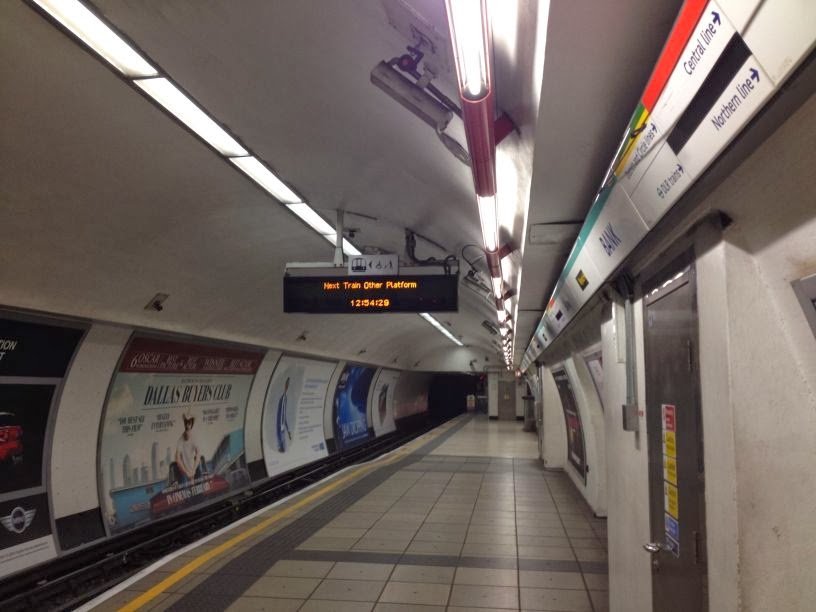I must admit I had noticed this place before but it was always hidden behind the locked gates of a temporary car park. Now there were some brand new smart hoardings announcing the Royal Mint Gardens, a new development of apartments.
A quick bit of internet research reveals that this was the last remaining building of the former Minories Railway Station which having gone through various renames and rebirths was finally demolished in 1987 when the Docklands Light Railway opened Tower Gateway Station which stands in the same location. The building in question is apparently the former accumulator tower, hydraulics and bonded stores and if you want to know what might have gone on in the building I’d recommend a quick read of the Urban75 link at the bottom of the page.
The view up Mansell Street to the tower. DLR train in Tower Gateway Station to the left.
The mystery writing did at one time proclaim “London Midland & Scottish Railway City Goods Station and Bonded Stores” but as previously mentioned only a couple of these words can be made out today.
As I noted this as a potential TYSAL candidate I also spotted that the tracks for the DLR ran right by the building so once I’d done a re-visit from ground level I could use part of the lunchtime visit to take a trip on the DLR past the building.
Unfortunately from ground level there’s not much more you can see that what I’d noticed from the first time I’d walked past. Certainly the building is looking very worse for wear with plants growing out of the exposed rafters on the roof. There doesn’t look to be any floors intact from what you can just about see through the windows.
View of the tower along Tower Gateway Platform.
There’s a handy entrance to Tower Gateway Station just over the other side of Mansell Street and this leads you directly out to the platform which although has two sides has just a single track in the middle. By walking down to the end of the platform you can get a good view of the Accumulator Tower although the other sides which are not visible from the road don’t have anything special about them, including any writing.
I hopped on the train that was waiting and was only slightly disappointed to find the best seats in the train, i.e. the “driver’s” seat were already taken by two young boys but I still had a good view of the tower as we travelled past. My original plan was just to go one stop down the line to Shadwell Station and then return but I thought this might look a bit weird so instead travelled to Canary Wharf and spent a pleasant ½ hour strolling around the docks where’s there’s more than a few random statues and art installations to look at and more than a few arrogant banker dickheads to avoid as best you can.
View of West India Quay from West India Quay DLR Station.
A trip to Canary Wharf and West India Quay would be a TYSAL in its own right but I did walk past this very fine looking namesake outside the Museum of London Docklands.
You would have thought if Robert was deserving of a statue, he'd be deserving of his full name?
The return trip was only eventful in that I hopped on and off DLR trains until finally I got one returning to Tower Gateway from Shadwell and managed to “baggsie” the driver’s seat. Needless to say I got the best view possible of the Accumulator Tower as we approached the station.
It will be interesting to see how the Royal Mint Gardens progress and I hope that the Accumulator Tower becomes an integral part of the new building and isn’t just pulled down to make way for some bland apartments.
Urban75 - Accumulator tower, hydraulics and bonded stores, Royal Mint St, E1
Minories Railway Station - Wikipedia
Royal Mint Gardens


























































